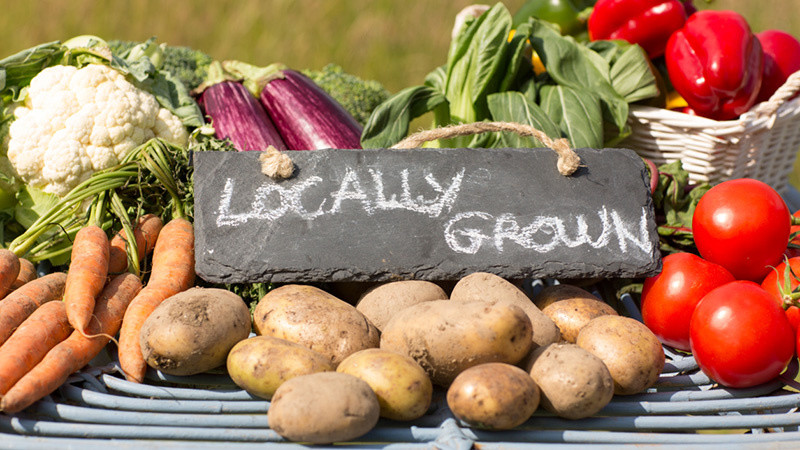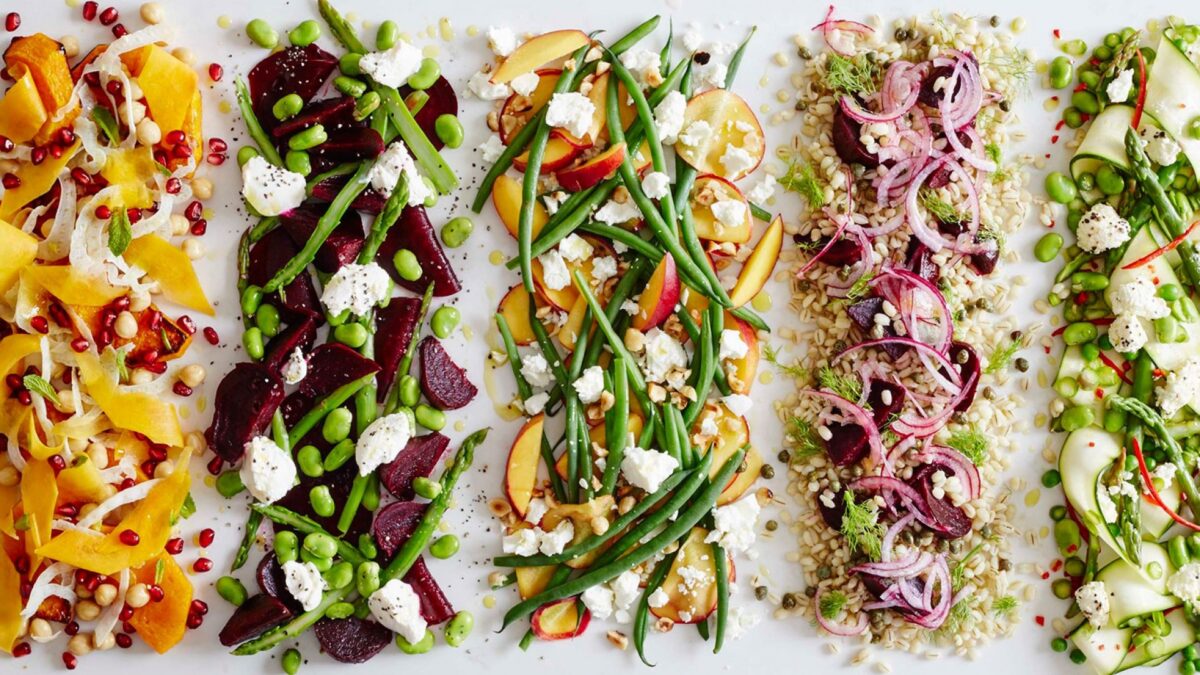Seasonal eating is something we’ve most likely all heard of but most of us have never tried. There’s actually a multitude of reasons as to why we should eat according to the seasons. With the summer solstice right around the corner (June 21st), now is the perfect time to get our heads around seasonal eating. Seasonal eating is not a new concept. It has actually been around for 100’s of years, and the indigenous cultures have it ingrained in their traditions. For those of you who aren’t familiar with the concept, seasonal eating is quite simply when you choose to eat foods that are being grown and harvested at the time you buy them. Sounds simple right? It sure is! I’ll explain the easy method we use to eat seasonally in a minute, but first of all, lets discuss the benefits!
- You’ll save money. When we eat foods that aren’t in season, it takes lots of energy and resources to manage, package and transport those foods to our supermarkets. Have you never noticed that the extremely expensive packet of strawberries you just picked up originated from Turkey or Egypt? Not exactly next door to the UK. This of course adds to the cost. Another factor in the dramatic price increase is the laws surrounding supply and demand. When a food is in season and abundant, it is less expensive that when it’s out of season and much harder to get hold of. Check out this chart for strawberry production.
- It helps the environment. Similarly to the first point, foods grown out of season take a tremendous amount of resources to get to supermarket shelves. It also takes a large amount of energy to recreate the natural growing season in an artificial way, and large amount of fossil fuels to transport foods across the world. Local, in-season foods do not, therefore reducing your carbon footprint!
- Seasonal Food tastes better! Fresh food tastes better, it doesn’t take a scientist to work that out. A fresh, blood-red, juicy tomato right from your garden could be a different food to the dull, hard watery tomato you bought from your grocery store mid-December. When foods are picked at the peak of ripeness, they were meant to be eaten at that time, so they taste amazing!
- Seasonal Foods are more nutritious. In order for foods growing out of season, elsewhere in the world, to be shipped to us, they have to be picked green before they are ripe and fully developed. If you buy local seasonal foods, they’re picked at their peak and in your fridge in no time at all, meaning more nutritious food for you. Studies have shown that crops grown in season can be up to 3 times more nutritious than foods which have to be picked early and shipped. This is due to the early harvesting, transportation and time in takes for foods to be purchased from the store.
- It adds variety to your diet. One of the major keys to a healthy diet is variety. Eating seasonally encourages you to break food habits and try new foods that you wouldn’t normally eat.
How To Get Started
So, now you know all the benefits of eating seasonally, its time to discuss how we actually go about starting to eat seasonally.
The best way to eat seasonally is to go to your local farmers market and speak to the farmers. Not only are they an amazing resource providing whole, fresh foods but they can also give you tips for preparation, recipes and new food suggestions for you. The alternative is to check out what is in season. This BBC Good Food Seasonality Guide is a great tool to see what to eat and when to eat it. Or check out this super simple Get Growing Guide to grow your own seasonal food, at the right time of the year.
And if you don’t want to spend the time growing your veggies and don’t have a local farmers market, your next option is the supermarket. Simply use one of the guides and find out what is in season where you are. Be careful to check the origin country stated on the packaging though!
Whats In Season Right Now?

Veg– Asparagus, carrots, cauliflowers, celeriac, cucumbers, curly kale, purple sprouting broccoli, savoy cabbage, spinach, spring greens, spring onion and watercress
Fruit– gooseberries and rhubarb
Fish– Crab, Haddock, John Dory, Lobster, Mackerel, Monkfish, Prawns, Seabass, Sea Salmon, Trout, Turbot
Meat– Beef steaks, chicken, sausages, spring lamb

Veg– Beetroot, Broad Beans, Carrots, Cauliflowers, Courgettes, Cucumber, Fennel, Fresh Peas, Garlic, Green Beans, Lettuce & Salad Leaves, New potatoes, Radishes, Runner Beans, Sage, Salad Onions, Squash, Tomatoes and Watercress
Fruit– Blueberries, Currants (black, white and red), Elderflower berries, Greengages, Loganberries, Plums, Raspberries, Strawberries and Tayberries
Fish– Crab, Pilchards and Wild Salmon
Meat– Beef Steaks, Chicken, Ham, Lamb, Pork Pies, Pork Spare Ribs, Saltmarsh Lamb, Sausages and Venison

Veg– Field Mushrooms, Lettuce, Marrow, Potatoes, Pumpkin, Rocket, Squashes, Sweetcorn and Watercress
Fruit– Apples, Blackberries, Damsons, Elderberries, Pears, Plums and Sloes
Fish– Brill, Dabs, Dover Sole, Flounders, Oysters and Skate
Meat– Chicken, Grouse, Ham, Heather-fed Lamb, Pies Pork, Sausages and Venison

Veg– Bay Leaves, Brussels, Sprouts, Cabbage, Carrots, Cauliflower, Celeriac, Curly Kale, Fennel, Leeks, Parsnips, Potatoes, Red Cabbage, Swede and Turnips
Fruit– Apples, Pears and Quince
Fish– Grey Mullet, Mussels and Scallops
Meat– Chicken, Gammon, Goose, Partridge, Pheasant, Sausages, Turkey, Venison and Wild Duck
We hope you have found this informative and have been inspired to try eating seasonally. Let us know how you get on and how you’re feeling if you do give it a go!





